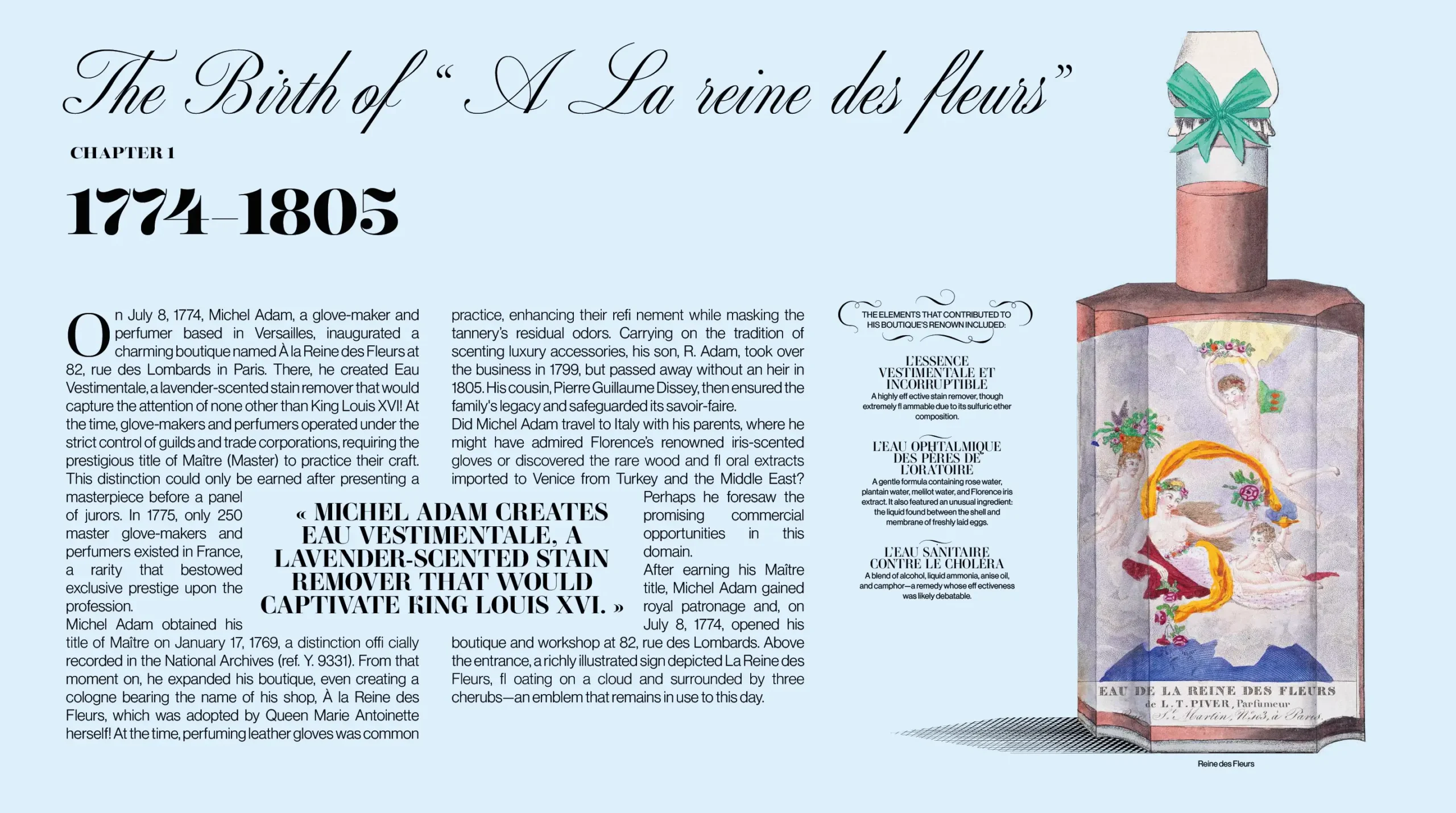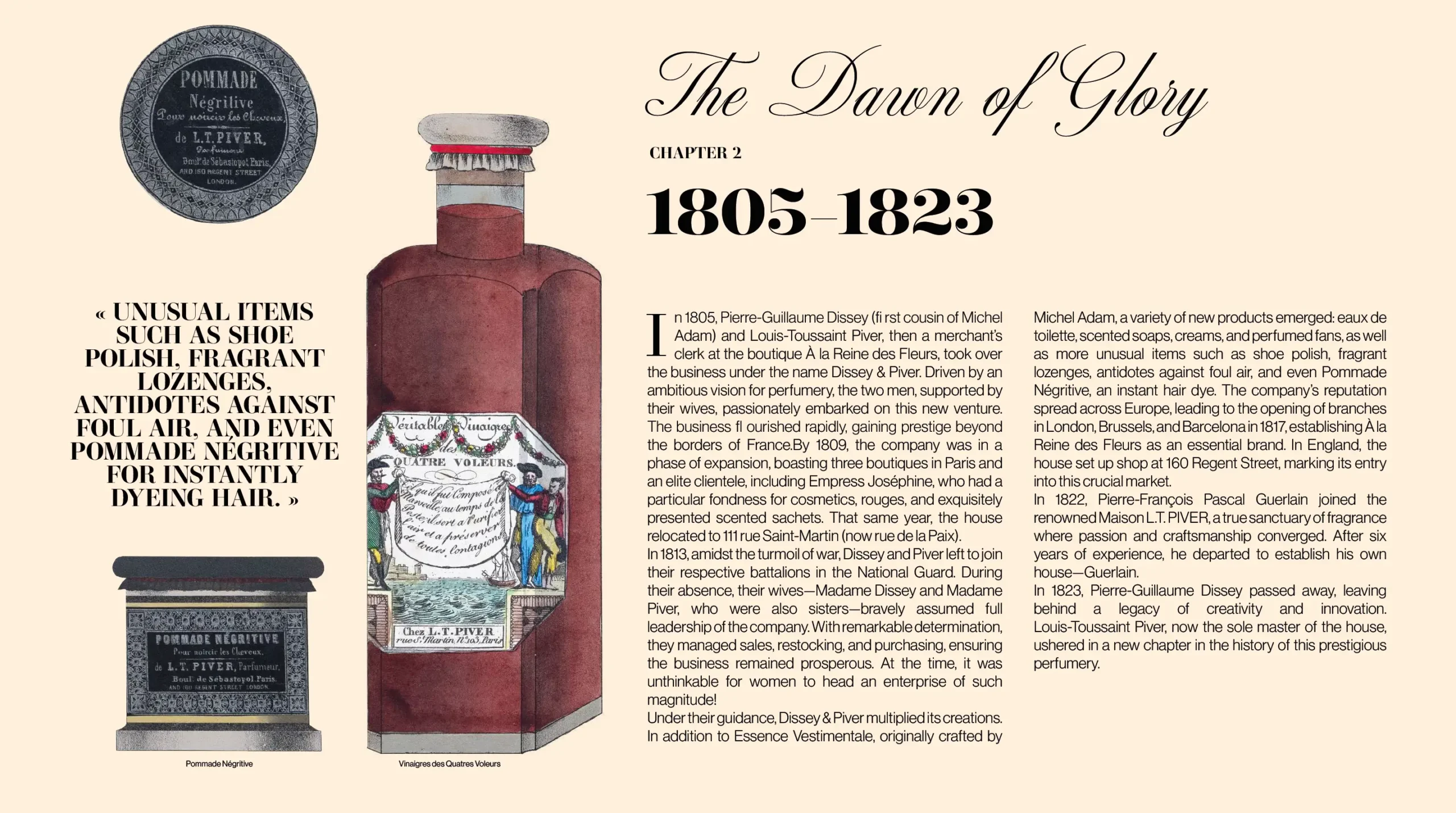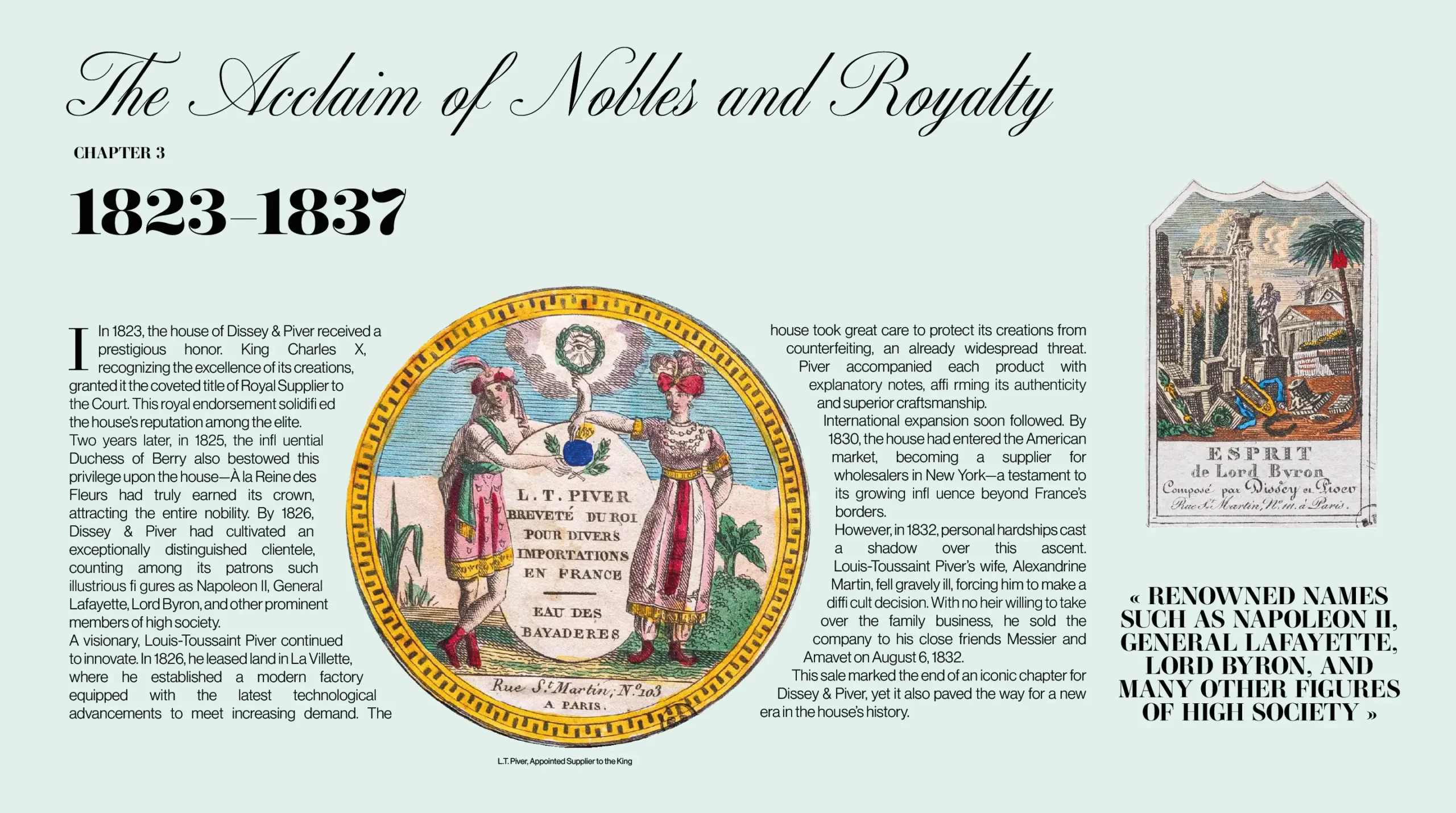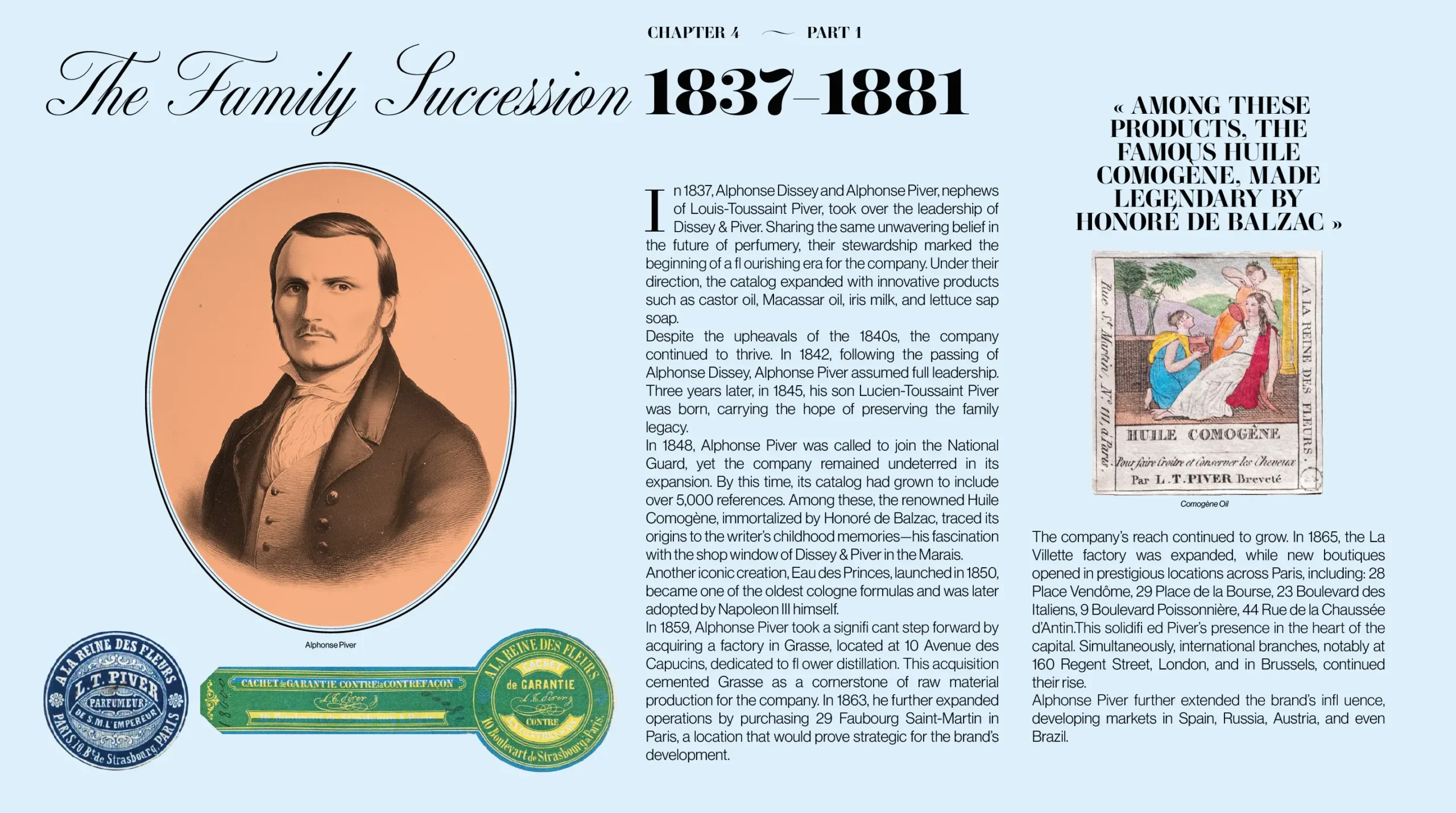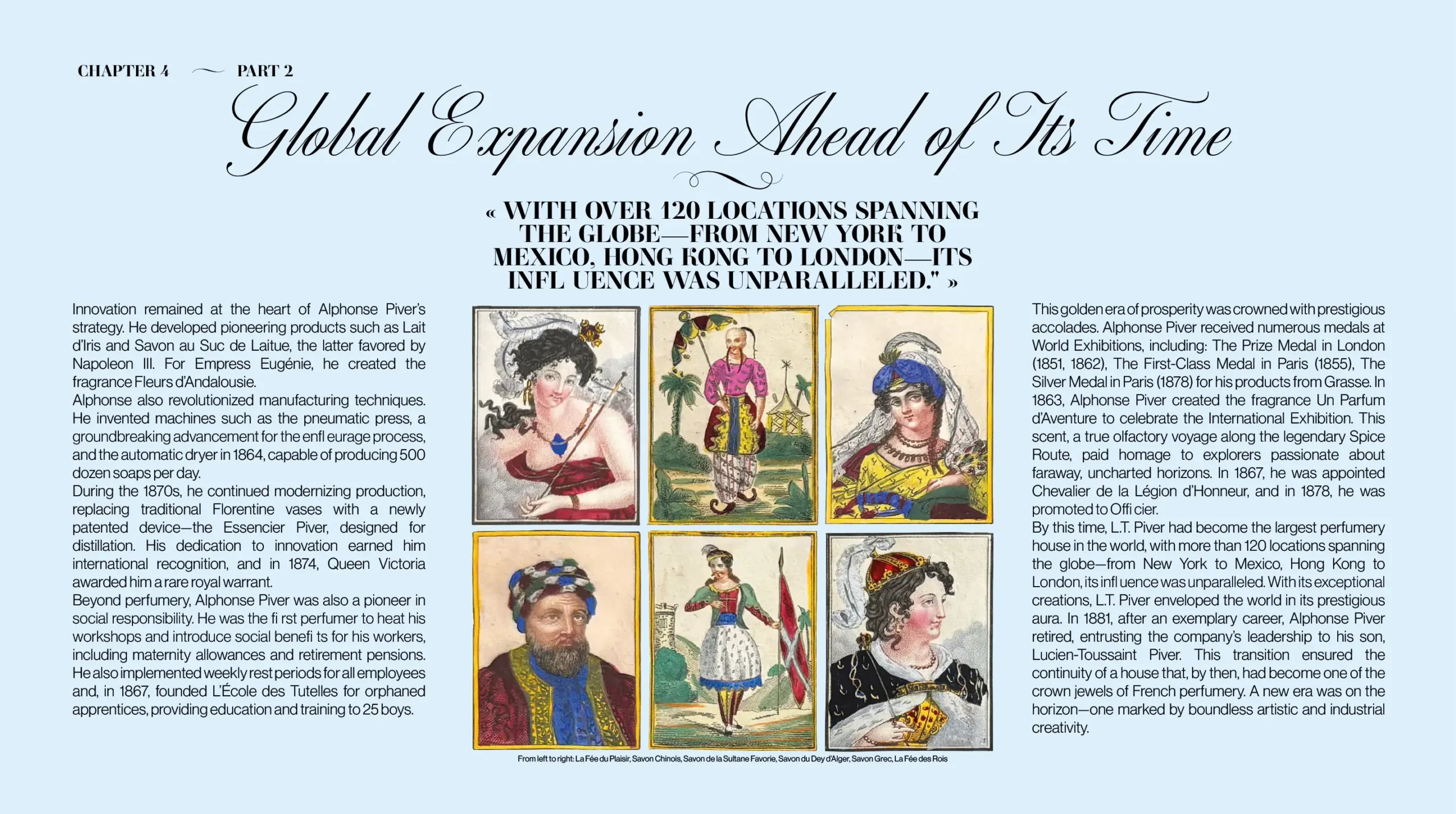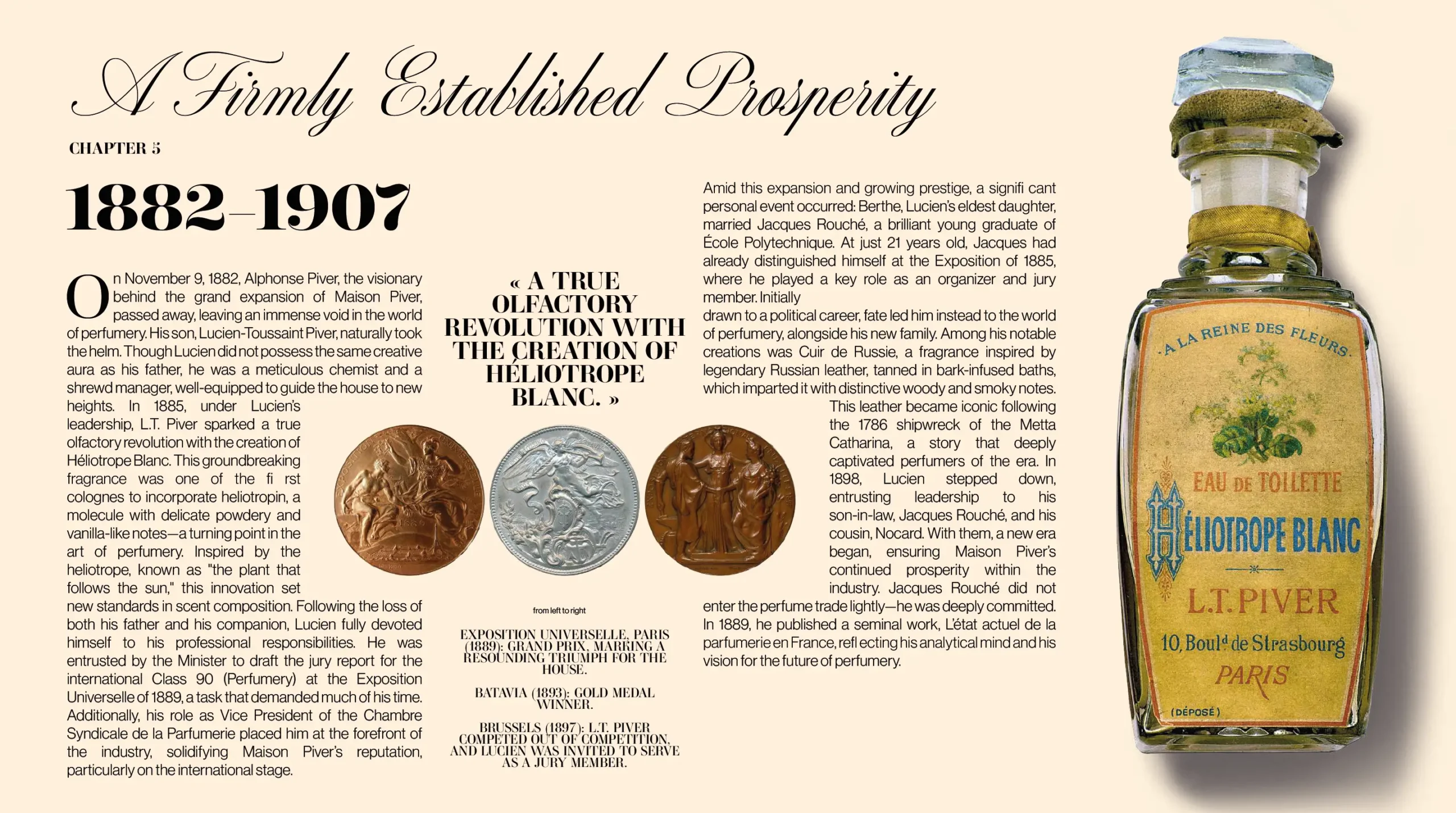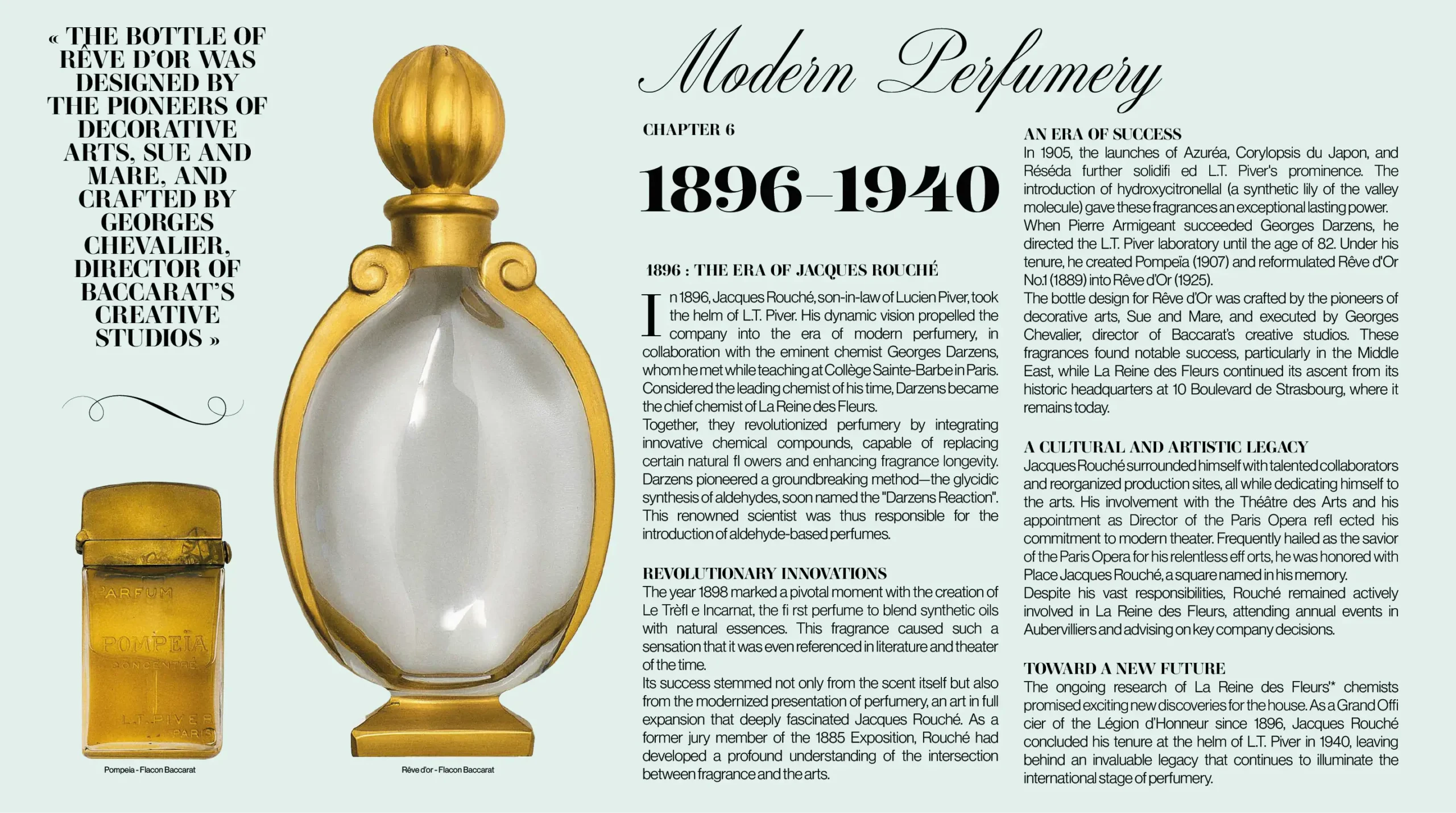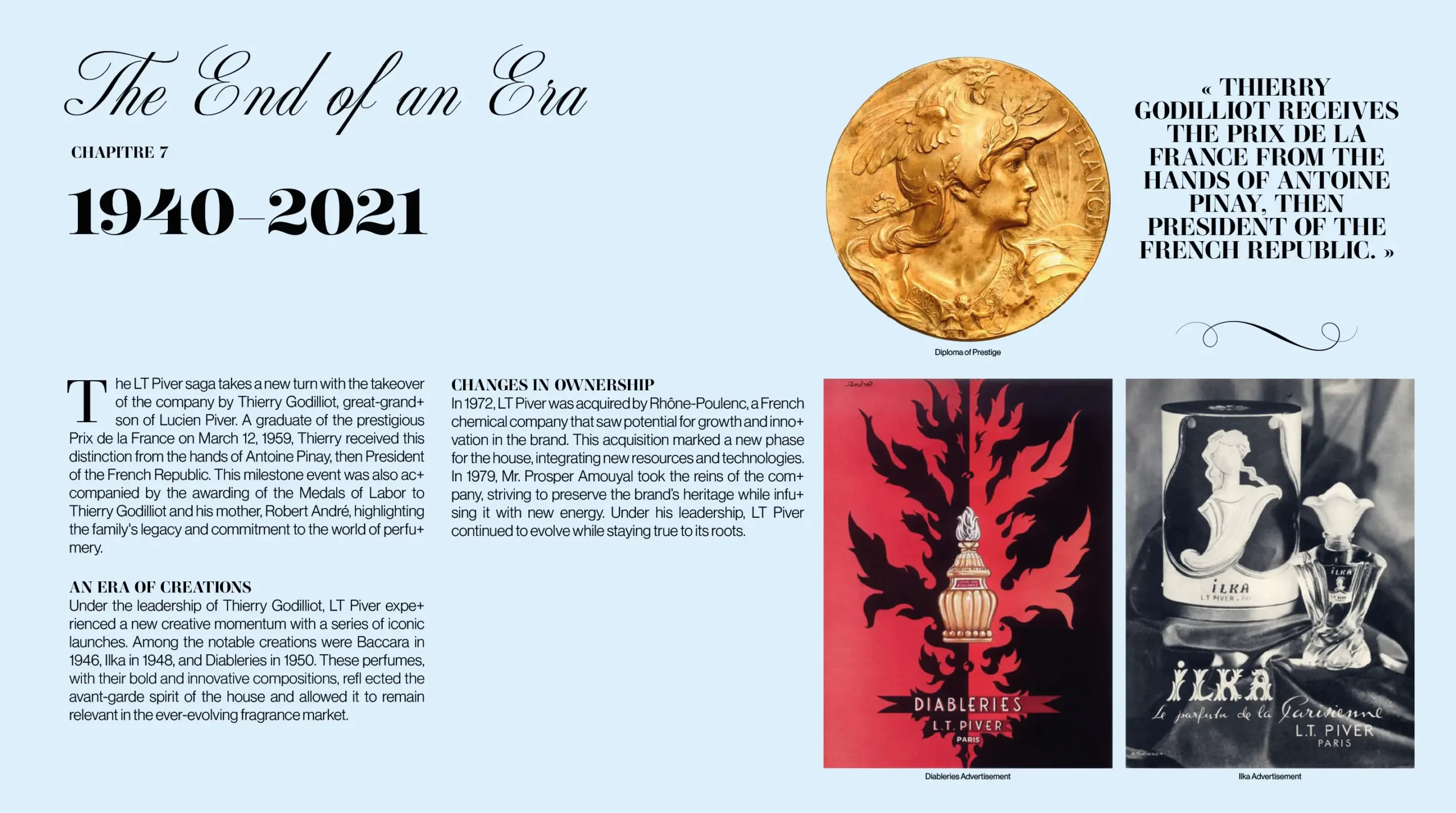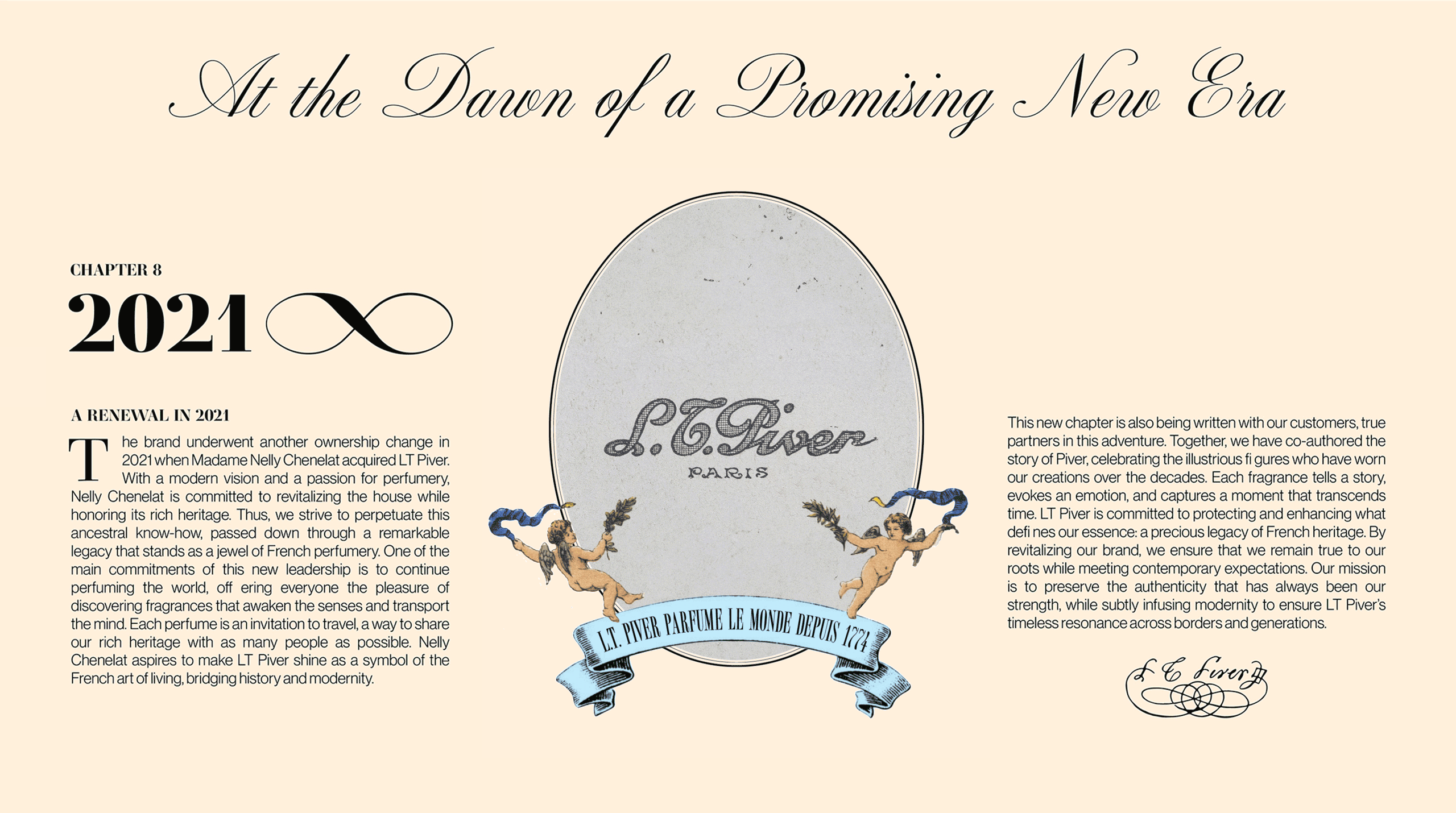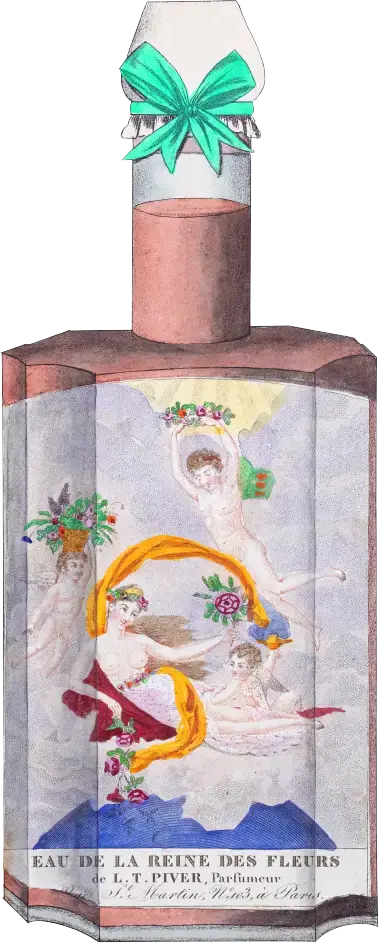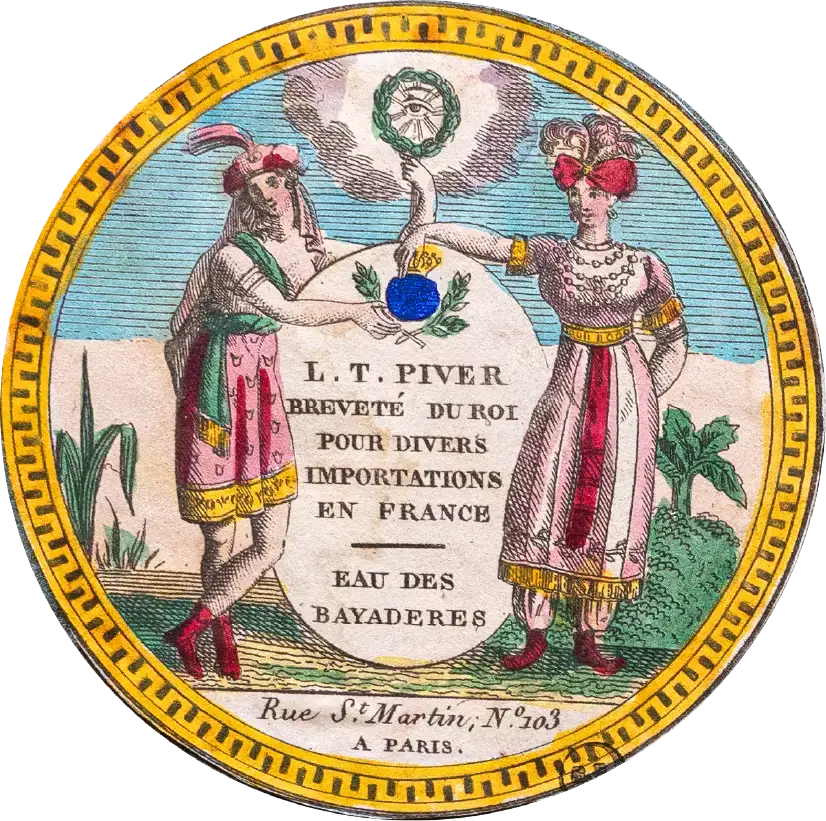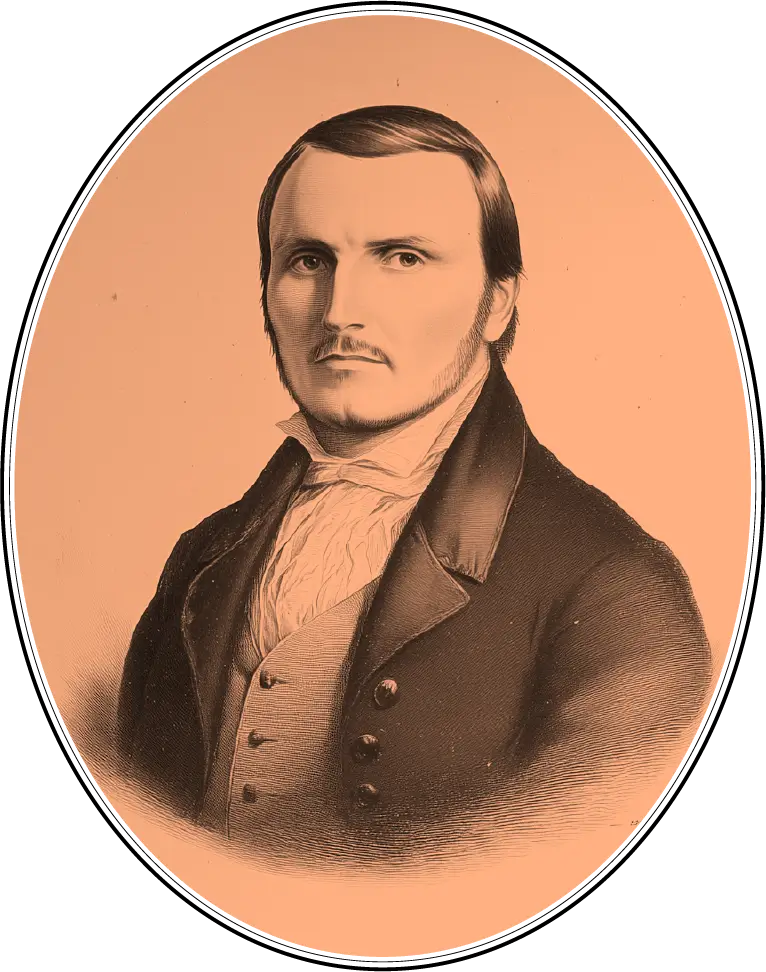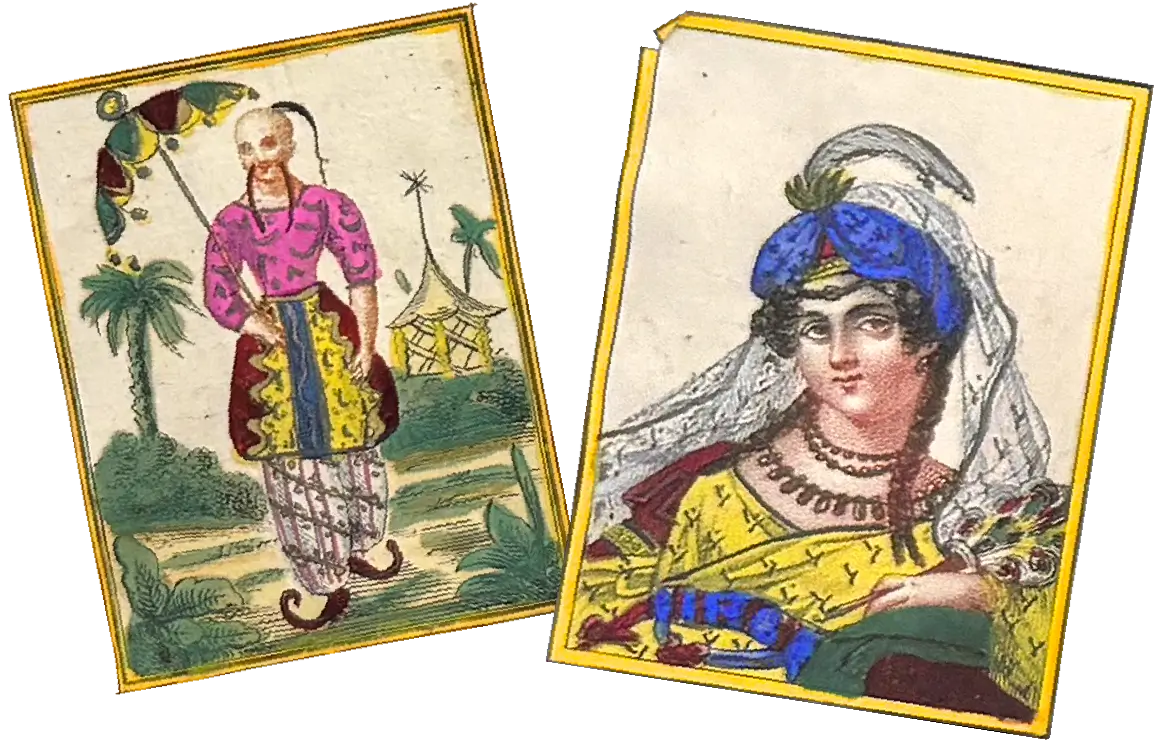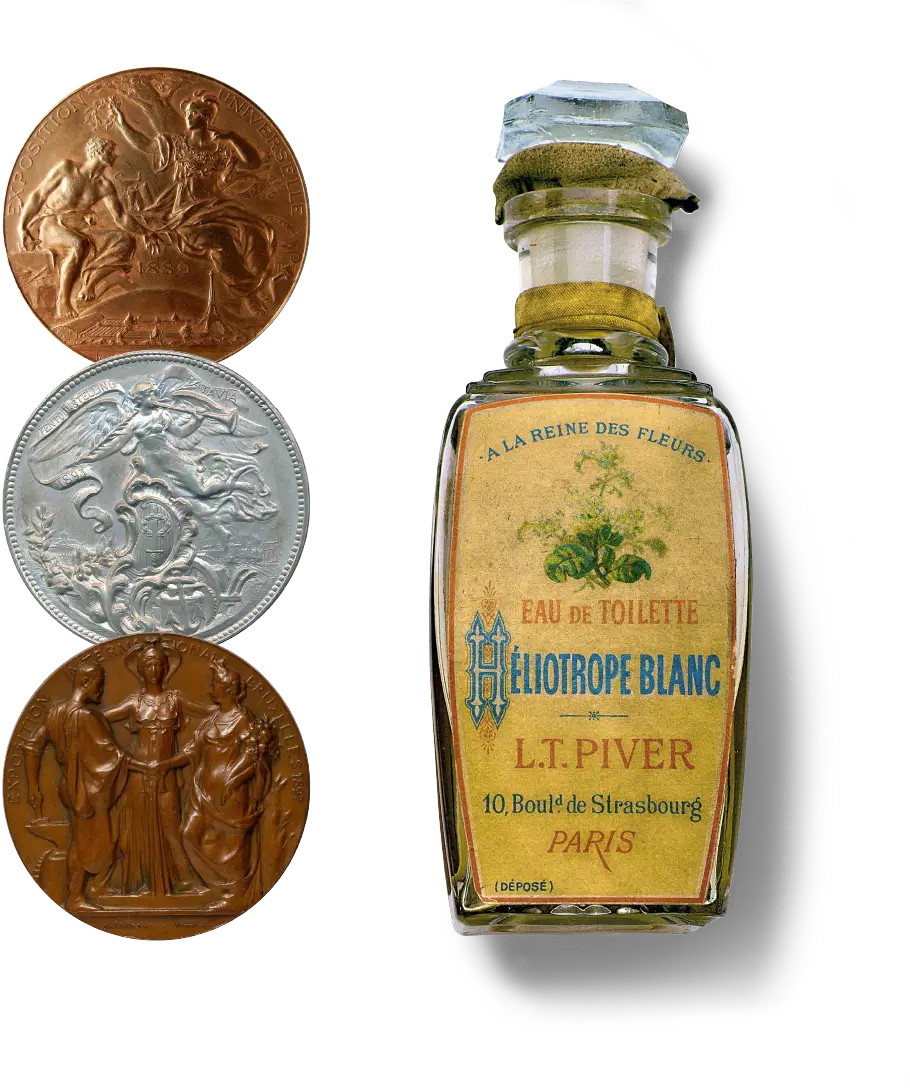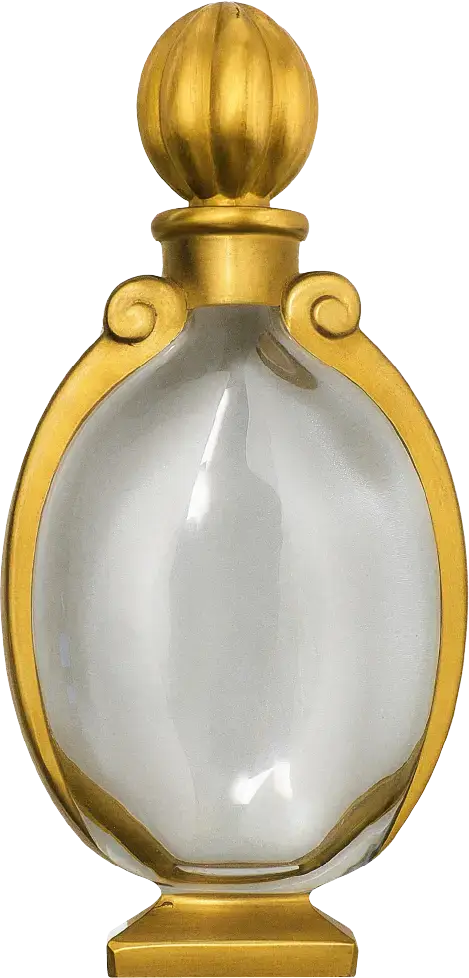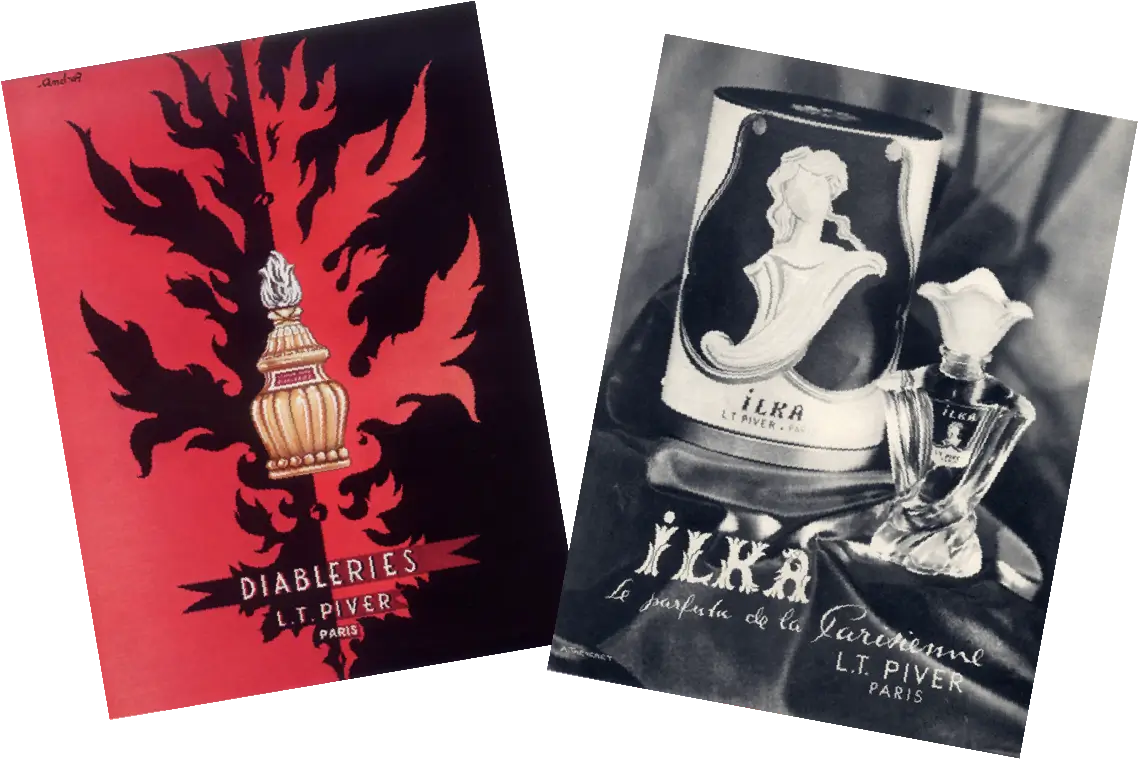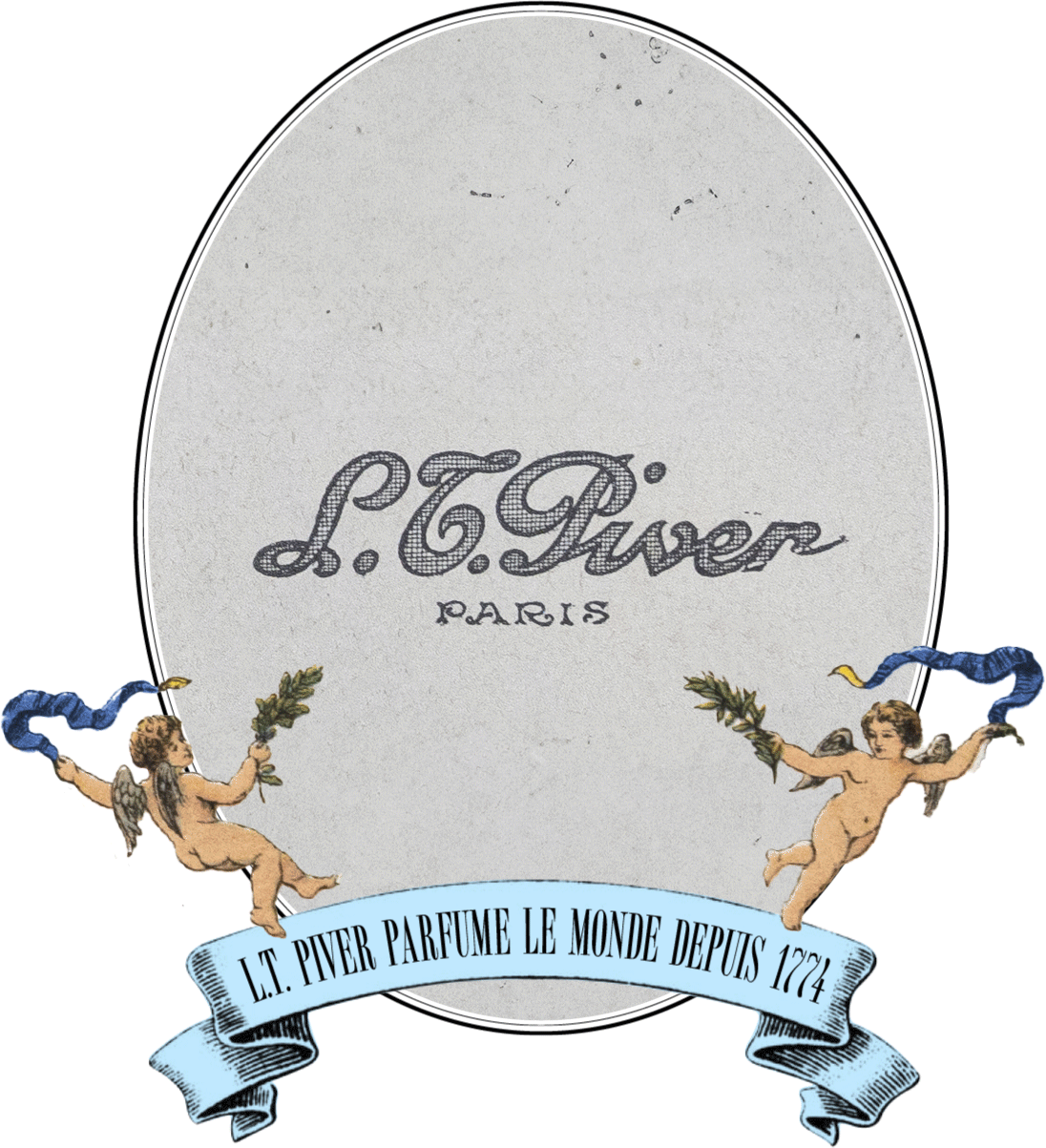Chapter 6
1896-1940
1896: The Era of Jacques Rouché
In 1896, Jacques Rouché, son-in-law of Lucien Piver, took the helm of L.T. Piver. His dynamic vision propelled the company into the era of modern perfumery, in collaboration with the eminent chemist Georges Darzens, whom he met while teaching at Collège Sainte-Barbe in Paris. Considered the leading chemist of his time, Darzens became the chief chemist of La Reine des Fleurs.
Together, they revolutionized perfumery by integrating innovative chemical compounds, capable of replacing certain natural flowers and enhancing fragrance longevity. Darzens pioneered a groundbreaking method—the glycidic synthesis of aldehydes, soon named the “Darzens Reaction”. This renowned scientist was thus responsible for the introduction of aldehyde-based perfumes.
Revolutionary Innovations
The year 1898 marked a pivotal moment with the creation of Le Trèfle Incarnat, the first perfume to blend synthetic oils with natural essences. This fragrance caused such a sensation that it was even referenced in literature and theater of the time.
Its success stemmed not only from the scent itself but also from the modernized presentation of perfumery, an art in full expansion that deeply fascinated Jacques Rouché. As a former jury member of the 1885 Exposition, Rouché had developed a profound understanding of the intersection between fragrance and the arts.
An Era of Success
In 1905, the launches of Azuréa, Corylopsis du Japon, and Réséda further solidified L.T. Piver’s prominence. The introduction of hydroxycitronellal (a synthetic lily of the valley molecule) gave these fragrances an exceptional lasting power.
When Pierre Armigeant succeeded Georges Darzens, he directed the L.T. Piver laboratory until the age of 82. Under his tenure, he created Pompeïa (1907) and reformulated Rêve d’Or No.1 (1889) into Rêve d’Or (1925).
The bottle design for Rêve d’Or was crafted by the pioneers of decorative arts, Sue and Mare, and executed by Georges Chevalier, director of Baccarat’s creative studios. These fragrances found notable success, particularly in the Middle East, while La Reine des Fleurs continued its ascent from its historic headquarters at 10 Boulevard de Strasbourg, where it remains today.
A Cultural and Artistic Legacy
Jacques Rouché surrounded himself with talented collaborators and reorganized production sites, all while dedicating himself to the arts. His involvement with the Théâtre des Arts and his appointment as Director of the Paris Opera reflected his commitment to modern theater.
Frequently hailed as the savior of the Paris Opera for his relentless efforts, he was honored with Place Jacques Rouché, a square named in his memory.
Despite his vast responsibilities, Rouché remained
actively involved in La Reine des Fleurs, attending annual events in Aubervilliers and advising on key company decisions.
Toward a New Future
The ongoing research of La Reine des Fleurs’* chemists promised exciting new discoveries for the house. As a Grand Officier of the Légion d’Honneur since 1896, Jacques Rouché concluded his tenure at the helm of L.T. Piver in 1940, leaving behind an invaluable legacy that continues to illuminate the international stage of perfumery.
